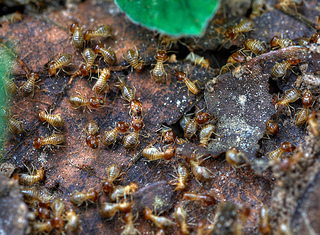Common Termite Locations
By Chris Williams on April 10, 2015.

Welcome. I’m Zack Ciras from Colonial Pest Control, your go-to full service pest control company serving Central and Eastern Massachusetts, Southern New Hampshire, and Southern Maine. Today, I’d like to spend a few minutes with you discussing the signs of termites and common locations to find them.
In New England, subterranean termites are a major cost of home damage. Many structures are damaged, resulting in millions of dollars in repairs and remediation. In the warmer climates, the costs are even worse.
The more southern we go, the higher the population of termites and the more varieties threaten structures.
With the cost in mind, how can we minimize the threat? What might make a home more susceptible to an infestation, and how could we alter the vulnerability?
A home with a compromised foundation, moisture issues, built on a fractured slab, or with unkempt landscaping is more vulnerable. It is crucial to correct any and all moisture problems which may arise. Signs of termites are often tied in to other water related issues like a leaky roof, leaky pipe, or damp and rotting wood. The wood sill behind a deck or front steps is very common for water to seep in and invite termites. A short distance between the ground and the wood of a home is a quick roadway to termite problems. Mud tubes may be seen on the foundation connecting the ground to a food source.
The tubes may be hidden within cracks, however. If there is wood to ground contact, the treck is even shorter. Garage door frames often run all the way to the ground, and this can be an issue.
Reduce the wood to ground contact, extend what you can of the visible foundation, and you will reduce your risk of an infestation.
A thorough inspection of the basement and first floor will give you the best chance of early detection. Use a flashlight and some tool to sound the wood and poke the wood, checking for water stains, mud tubes, and pucky wood. Termite evidence may be easily overlooked, but routine inspections in key sensitive areas are worth the time and effort.
Termites within the walls may be more difficult to detect if there are little easily visible signs. Tap any wood along ground level to determine if it sounds damaged. Try for the door frames and baseboards. Watch for termite swarmers in the spring especially. Termites will mainly be along the basement sills, floor and subfloor, and floor joists. Look for mud tubes, swarms or their dropped wings, moisture damage, or clearly damaged wood.
Visit us at colonialpest.com and give us a call at 1-800-525-8084. For Colonial Pest Control, I’m Zack Ciras. We’ll catch you next time.
Photo credit: Gnilenkov Aleksey / Foter / CC BY